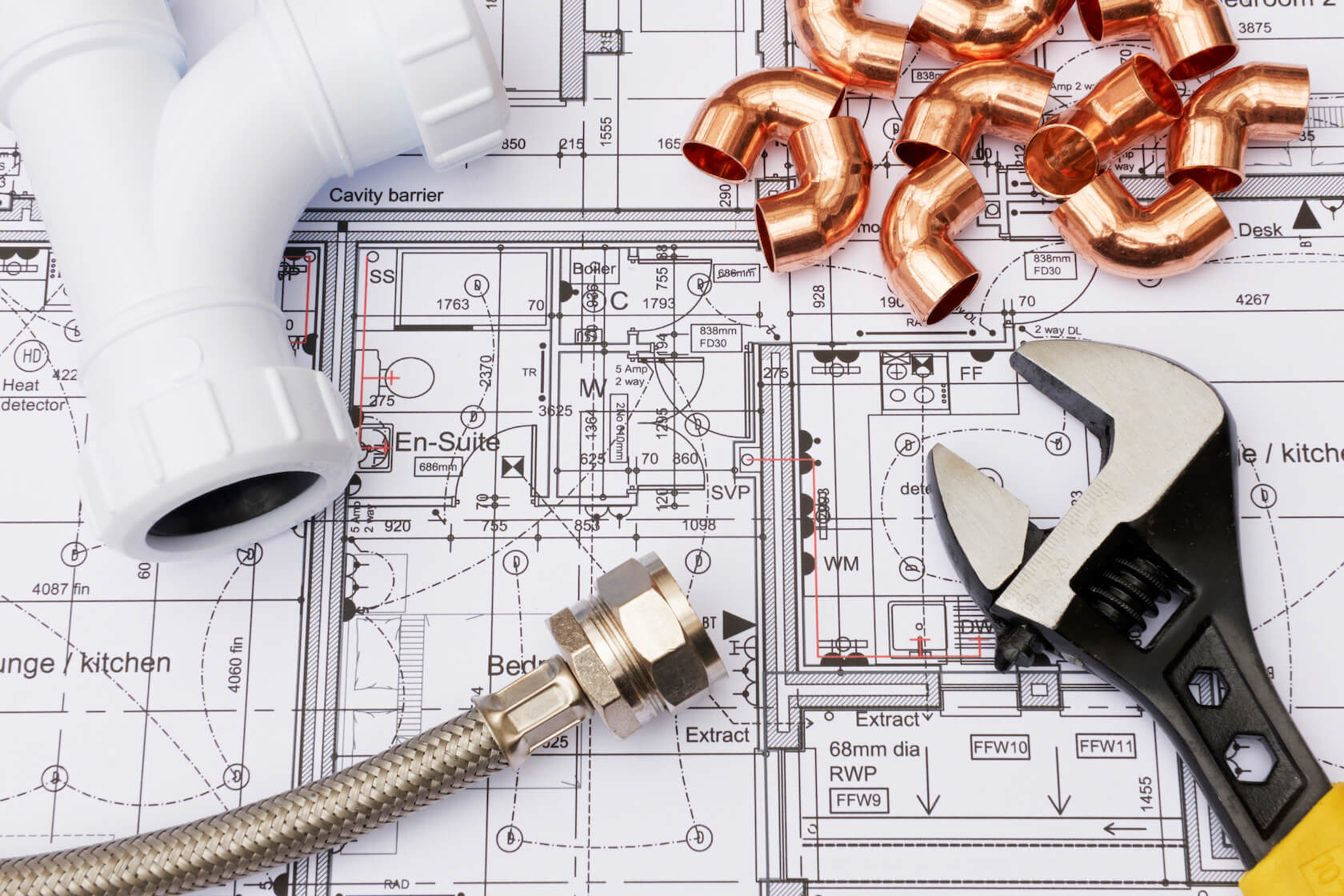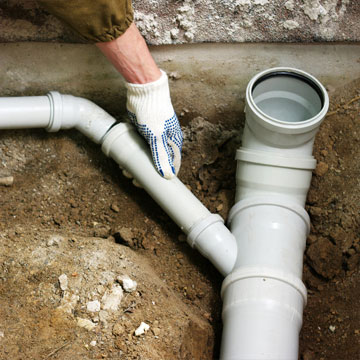The Core Parts of Your Home's Plumbing System
The Core Parts of Your Home's Plumbing System
Blog Article
They are making a few good observations related to The Inner Workings of Your Home's Plumbing as a whole in the article followed below.

Recognizing just how your home's pipes system functions is crucial for every single property owner. From delivering tidy water for alcohol consumption, cooking, and showering to securely eliminating wastewater, a properly maintained plumbing system is critical for your family members's health and wellness and comfort. In this thorough guide, we'll explore the detailed network that composes your home's plumbing and deal ideas on maintenance, upgrades, and taking care of typical issues.
Intro
Your home's plumbing system is more than simply a network of pipes; it's an intricate system that ensures you have accessibility to tidy water and efficient wastewater elimination. Knowing its parts and exactly how they work together can aid you avoid pricey repair services and ensure every little thing runs smoothly.
Standard Parts of a Plumbing System
Pipes and Tubes
At the heart of your plumbing system are the pipes and tubes that bring water throughout your home. These can be made of numerous products such as copper, PVC, or PEX, each with its benefits in terms of durability and cost-effectiveness.
Fixtures: Sinks, Toilets, Showers, and so on.
Fixtures like sinks, commodes, showers, and bathtubs are where water is made use of in your home. Comprehending how these components attach to the plumbing system aids in diagnosing issues and planning upgrades.
Valves and Shut-off Points
Shutoffs manage the circulation of water in your pipes system. Shut-off valves are vital during emergency situations or when you need to make repairs, enabling you to isolate parts of the system without interfering with water flow to the whole house.
Water System System
Main Water Line
The major water line connects your home to the metropolitan water supply or a personal well. It's where water enters your home and is distributed to different fixtures.
Water Meter and Pressure Regulatory Authority
The water meter steps your water use, while a pressure regulatory authority guarantees that water moves at a safe stress throughout your home's plumbing system, stopping damages to pipes and components.
Cold Water vs. Hot Water Lines
Comprehending the difference between cold water lines, which provide water directly from the primary, and warm water lines, which carry warmed water from the hot water heater, helps in repairing and planning for upgrades.
Water drainage System
Drain Piping and Traps
Drain pipes carry wastewater far from sinks, showers, and bathrooms to the sewer or septic system. Traps protect against sewer gases from entering your home and additionally trap particles that could create clogs.
Air flow Pipes
Air flow pipes enable air right into the drain system, protecting against suction that might slow down water drainage and cause catches to empty. Appropriate air flow is vital for keeping the integrity of your plumbing system.
Relevance of Proper Water Drainage
Ensuring proper drain prevents backups and water damages. Routinely cleaning up drains pipes and maintaining catches can protect against costly repair services and expand the life of your pipes system.
Water Heating Unit
Kinds Of Hot Water Heater
Water heaters can be tankless or standard tank-style. Tankless heating systems heat water on demand, while containers save heated water for instant usage.
Upgrading Your Plumbing System
Reasons for Updating
Updating to water-efficient fixtures or replacing old pipelines can boost water quality, decrease water expenses, and boost the worth of your home.
Modern Plumbing Technologies and Their Benefits
Check out modern technologies like clever leak detectors, water-saving bathrooms, and energy-efficient hot water heater that can conserve money and decrease environmental effect.
Price Factors To Consider and ROI
Calculate the upfront expenses versus long-lasting cost savings when taking into consideration pipes upgrades. Several upgrades spend for themselves via lowered energy expenses and fewer repair work.
How Water Heaters Connect to the Plumbing System
Recognizing just how hot water heater link to both the cold water supply and hot water distribution lines aids in diagnosing concerns like not enough warm water or leaks.
Maintenance Tips for Water Heaters
Regularly purging your hot water heater to eliminate sediment, checking the temperature level setups, and examining for leaks can extend its life-span and enhance energy efficiency.
Usual Plumbing Issues
Leakages and Their Reasons
Leaks can occur as a result of aging pipes, loosened installations, or high water pressure. Addressing leakages quickly prevents water damages and mold growth.
Obstructions and Obstructions
Obstructions in drains and commodes are typically brought on by flushing non-flushable products or a build-up of grease and hair. Making use of drain displays and being mindful of what decreases your drains pipes can avoid obstructions.
Signs of Pipes Troubles to Look For
Low tide pressure, sluggish drains pipes, foul odors, or unusually high water expenses are indicators of prospective plumbing issues that should be resolved quickly.
Pipes Maintenance Tips
Normal Evaluations and Checks
Arrange yearly plumbing assessments to capture concerns early. Search for indications of leakages, corrosion, or mineral buildup in faucets and showerheads.
Do It Yourself Maintenance Tasks
Straightforward tasks like cleansing faucet aerators, looking for toilet leaks making use of dye tablet computers, or insulating subjected pipelines in chilly environments can prevent significant plumbing problems.
When to Call a Specialist Plumbing
Know when a pipes issue needs specialist knowledge. Trying complex fixings without proper knowledge can result in more damage and higher repair service prices.
Tips for Lowering Water Use
Straightforward habits like repairing leaks without delay, taking much shorter showers, and running complete loads of laundry and recipes can save water and reduced your energy bills.
Eco-Friendly Plumbing Options
Think about lasting plumbing materials like bamboo for flooring, which is durable and green, or recycled glass for kitchen counters.
Emergency situation Preparedness
Steps to Take During a Pipes Emergency situation
Know where your shut-off shutoffs are located and how to shut off the supply of water in case of a burst pipe or major leak.
Importance of Having Emergency Situation Calls Convenient
Maintain contact information for local plumbings or emergency services readily available for quick reaction during a pipes dilemma.
Ecological Influence and Preservation
Water-Saving Components and Devices
Mounting low-flow taps, showerheads, and commodes can significantly lower water use without compromising performance.
DIY Emergency Situation Fixes (When Relevant).
Momentary repairs like utilizing duct tape to spot a dripping pipe or placing a pail under a trickling faucet can reduce damage till an expert plumber shows up.
Conclusion.
Understanding the makeup of your home's plumbing system empowers you to keep it successfully, saving time and money on fixings. By complying with regular upkeep routines and staying educated regarding modern pipes innovations, you can ensure your pipes system operates successfully for many years to come.
Understanding Your Home Plumbing System: A Comprehensive Guide
Plumbing System: The Lifeline of Your Home
At its core, the plumbing system is designed to perform two primary functions: bring fresh water into your home and remove wastewater. The system is a network of pipes, fixtures, and other components that transport water and sewage. Residential plumbing systems include potable water supply lines, drain-waste-vent (DWV) systems, and various plumbing fixtures that make water use in daily tasks possible.
Key Components:
Water Supply: This part of your plumbing system brings municipal water into your home, passing through the main water supply line. It s responsible for supplying all water needs, from drinking to bathing.
Drainage System: It carries waste and water away from your home to the sewer or septic system. This system includes all the piping within your home that leads to external sewage or septic systems.
Vent System: An essential yet often overlooked component, the vent system allows sewer gases to escape and lets air into the drainpipes, ensuring water and waste move correctly through the system.
Fixture: More Than Just Taps and Toilets
Plumbing fixtures are the most interactive parts of the plumbing system, including faucets, showers, toilets, and sinks. Each fixture is connected to the plumbing system and plays a role in either the delivery of freshwater or the disposal of waste and wastewater.
Types of Fixtures:
Faucets and Sinks: Used for washing hands, dishes, and other daily water needs. Toilets: Dispose of human waste through the sewage system. Bathtubs and Showers: Provide bathing facilities, requiring both hot and cold water supply. Water Supply: The Source of Life
The water supply system is a critical component, ensuring that potable water is available throughout your home for various uses, including drinking, cooking, and cleaning. This system consists of pipes that distribute water to different parts of the house, controlled by valves to regulate the water flow.
Types of Plumbing: Materials and Methods
Various types of plumbing systems and materials are used in residential settings, each with its advantages and applications. From copper and PVC pipes for water supply to cast iron and ABS for drainage, the choice of materials can impact the longevity and efficiency of your plumbing system.
https://intownplumbingtx.com/articles/home-plumbing-system-guide/

We were made aware of that report on The Inner Workings of Your Home's Plumbing through someone on our other web page. If you please take a moment to share this entry if you enjoyed reading it. We treasure reading our article about .
Call Today Report this page